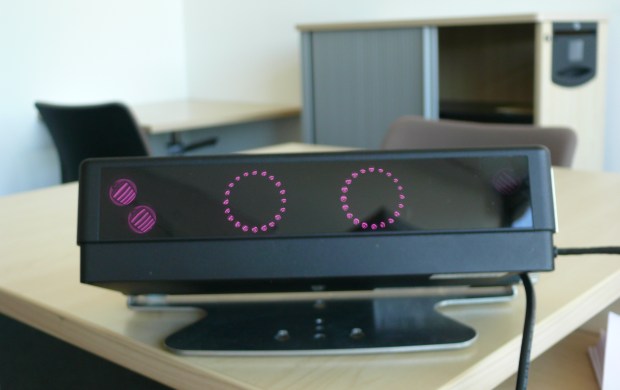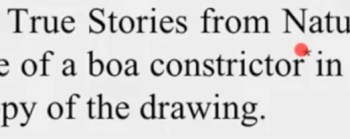It’s an interesting time to be in the e-book business. E-readers in their many varieties are sussing out the perfect user experience, and the race to the bottom might end up with students packing a Kobo into their bag instead of 20 pounds of expensive textbooks. When it comes down to it, though, you’re selling a mostly static experience — as indeed books have been for a long time. Interaction in books is the realm of children: pop-ups and coloring books. But the move to new and interesting devices has some people excited about the future of text — and this Text 2.0 idea may just change how you think about interacting with books.
The idea is that it tracks where you’re looking, and based on a number of factors, triggers one of several context-sensitive actions. An eye-tracking interface is an entirely new beastie, however, and somehow I’m not convinced that real life usage will be quite as easy to collate and react to as this video seems to suggest.
Now, there’s a whole world of UI implications that follow from the ability of a device to track where you’re looking. A whole system of navigation and file management controlled by gaze and blinks — the possibilities are endless. Remember the EyeWriter, a project allowing a quadriplegic artist to sketch things with only his eyes? But I digress. What’s on the table now is this Text 2.0 implementation of eye-tracking.

While I appreciate what’s on offer, I have to wonder whether it’s something human beings would really appreciate. The simple fact is this: we don’t interact with things using our eyes. That’s what our hands are for. And that’s why the next generation of books and magazines is going to be both rich and tactile. While certainly you could train yourself to “click” with your eyes, I’m skeptical of the preferability of that over a simple touch-based interface. When the eye is the only or best input (as with the EyeWriter) then it’s a go, but for all others, any action that might be taken with the eye (getting a word definition or something) could be done just as easily with a quick gesture — and there’s much less room for error.
 Speaking of error, I’m also concerned about the level of precision necessary. This thing has to be able to tell whether I’m looking at the last letter of a sentence or the asterisk above it; that’s probably more than you can ask of a pair of tiny bezel cameras with fixed-focus lenses. The technology they’re using to develop Text 2.0 costs upwards of $10,000 — of course, that could come down or the software be ported to more cost-effective hardware, but can it really do what it says it can do and still be affordable?
Speaking of error, I’m also concerned about the level of precision necessary. This thing has to be able to tell whether I’m looking at the last letter of a sentence or the asterisk above it; that’s probably more than you can ask of a pair of tiny bezel cameras with fixed-focus lenses. The technology they’re using to develop Text 2.0 costs upwards of $10,000 — of course, that could come down or the software be ported to more cost-effective hardware, but can it really do what it says it can do and still be affordable?
Well, I can see I’m coming off as a sort of tech pedant here. This isn’t a ready-for-market product, it’s a cool concept being worked on by some very smart people, and I can think of quite a few applications for this right off the top of my head. Kids learning to read would be a perfect example — a couple of these in a remedial reading class would probably raise scores significantly. But they clearly have some hurdles ahead of them if this is to be anything other than an academic project.
In the end, though, I think these guys are a little too far ahead of the curve, if anything. If gaze detection is to play a part in any future UIs, I get the feeling that the meta-text interface will follow from established user behavior patterns in a broader UI scheme, rather than being specific to a single purpose, as they are in Text 2.0. That all will be seen, however — as soon as we get our eye-tracking Chrome OS iPad XPs.